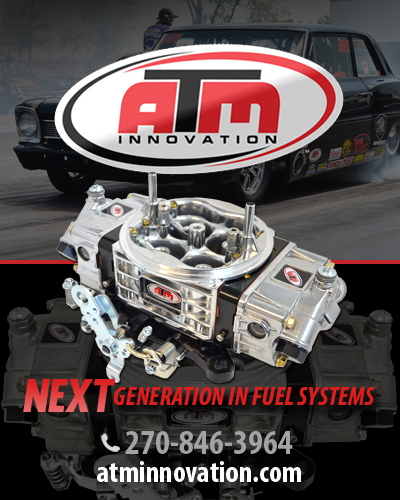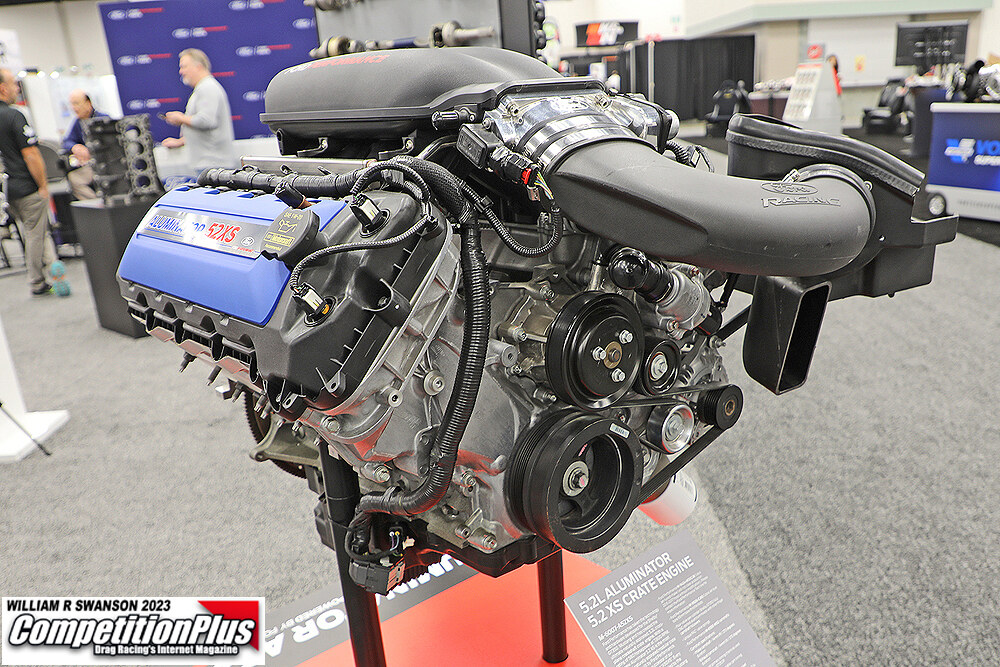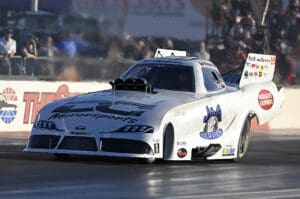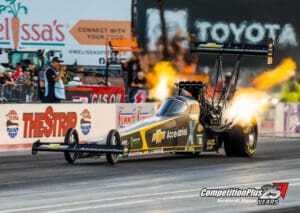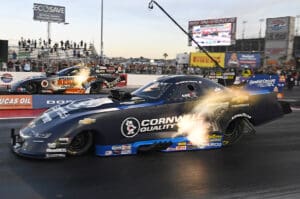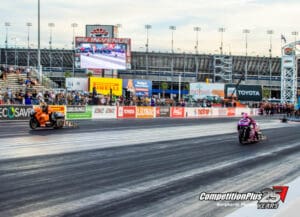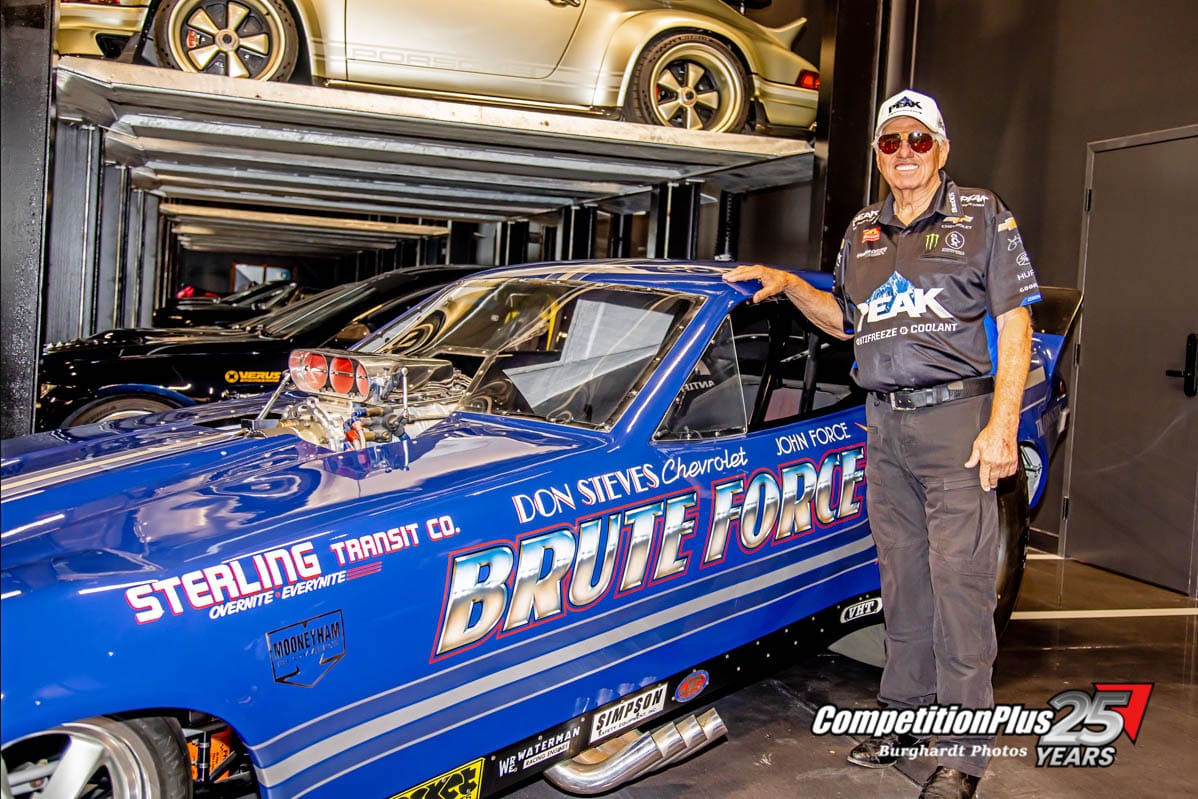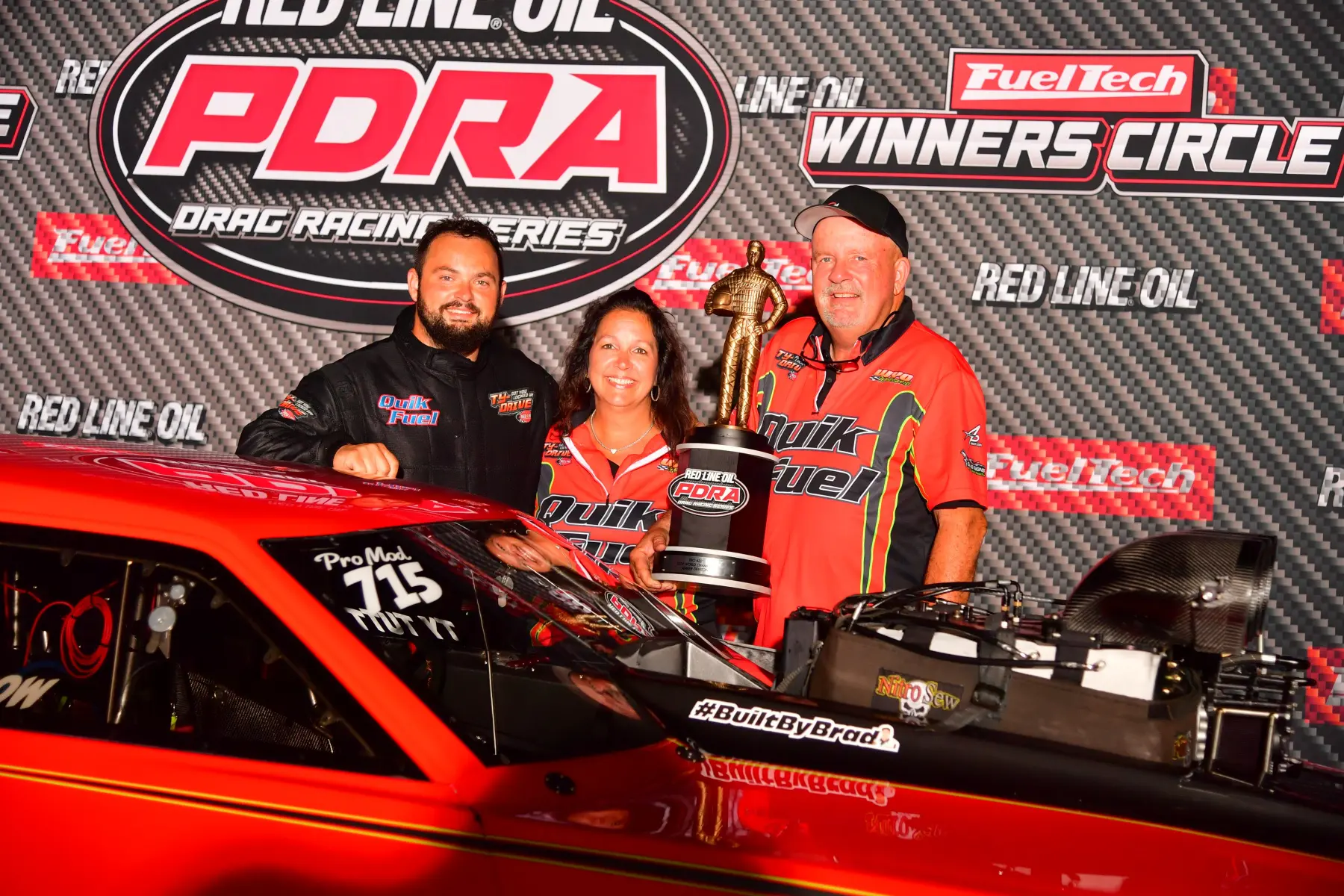
 Two drivers, two airborne projectile race cars.
Two drivers, two airborne projectile race cars.
One person dead, one with a broken arm and another severely injured.
According to Pro Stock icon Warren Johnson, it all could have been avoided.
Ronnie Davis, a Top Sportsman racer from the Atlanta area and one of Johnson’s friends, died on April 10, 2016, a day after crashing his car at a PDRA event when his 1963 Corvette spun around at the finish line, went airborne and flew over the retaining wall at Rockingham Dragway. He also struck a credentialed photographer in an approved location an eighth-mile past the finish line.
Sunday at the NHRA Spring Nationals at Houston, Pro Modified racer Sidnei Frigo crossed the centerline when the car turned left and then took flight before striking the wall and barrel-rolling in the rain-softened grass of Royal Purple Raceway. Frigo suffered only a broken arm in the incident.
Johnson, for the most part, kept quiet after the Davis accident but said in good conscience he could no longer hold his peace after watching Frigo’s crash.
“Ronnie would still be here today,” Johnson said. “I did all this work and spent two days at the wind tunnel at GM trying to figure out where we need roof flaps and roof rails on these cars. And we basically eliminated all the lift.
“Sidnei Frigo, he’s d*** lucky. He’s lucky that it had rained down there and the ground was soft so basically it stuck when it hit that mud. He scrubbed off a lot of energy when he hit that wall and tumbled over a couple of times. He was very fortunate, but the scenario is still there and had that been dry ground he would have bounced right off of it instead of it absorbing all that energy, then yeah, he might not be here either had that been the case. He just had the wrong thing happen at the right time.”
Johnson says he’s not speaking from opinion, he’s speaking from facts and has the results to back up his claims.
“When I saw that video of Frigo where that car was 236 mph and two-feet off the ground just floating I knew this issue had to be addressed,” said Johnson. “If Ronnie would have had roof rails and flaps on that car, he would have hit that wall, not gone over it. You can drive the car if it’s on the ground, but their pretty GD hard to steer when it’s in the air because I haven’t seen a rudder on one of these cars yet.”
Johnson said there was a rash of airborne car crashes back in 1996 which led him to seek a solution. He said he sent those results to the NHRA and was met with resistance to his proposal.
“They didn’t want anything to do with cars looking like NASCAR cars,” said Johnson. ‘I said, ‘This is not a case of looking like NASCAR cars. I’m just trying to save some lives.”
Johnson maintains that the roof flaps would have for the most part been hidden from the race fan and would never have been seen unless the car had gone awry.
“They’d be laying down,” Johnson said. “The only time they’re exposed is when someone has a problem. And the roof rail; all I had was a one-inch high roof rail on that thing and that was only over the roof, I didn’t even go all the way down the back window. You have to realize that we’re dealing with cars that are half a ton lighter than a NASCAR car.”
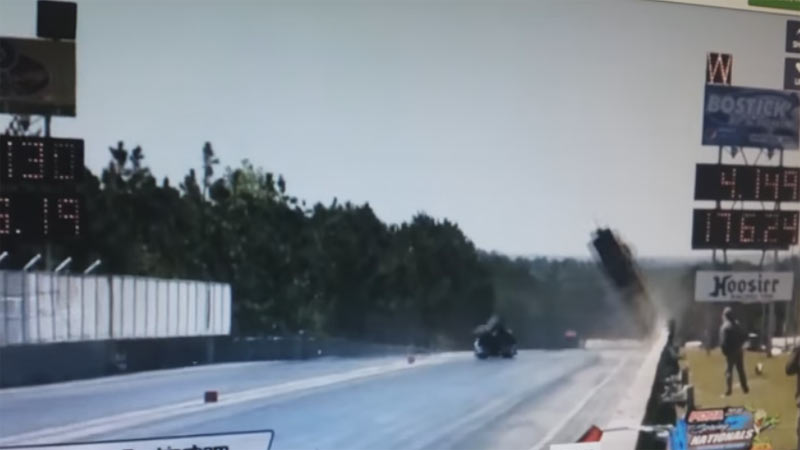 Johnson said the issue transcends Pro Stock with Pro Modified and Top Sportsman cars both capable of these violent accidents as evidenced recently with the Davis and Frigo incidents.
Johnson said the issue transcends Pro Stock with Pro Modified and Top Sportsman cars both capable of these violent accidents as evidenced recently with the Davis and Frigo incidents.
“These cars are 30 to 40 mph faster than we were at back then and they’re roughly the same weight,” Johnson explained. “All they see in that envelope if the car weighs the same, it’s going 40 mph faster, it’s got that much more lift in it. They got no choice but to go airborne.”
Johnson insists that the NHRA’s technical department has long been reactive instead of proactive. NASCAR made the roof flaps mandatory in 1993 and as recently as 2013 upgraded the devices to new specs.
Still Johnson contends, NHRA hasn’t made moves publicly to address this very real issue.
CompetitionPlus.com contacted members of NHRA’s technical department working at the time Johnson alleges he brought the proposal and none recall a discussion of the roof flaps.
Regardless if NHRA remembers, Johnson said he remembers being proactive on safety with his cars. He recalled the incident of Mickey Tadlock, a former Pro Stock racer who suffered head injuries at the 1985 NHRA Cajun Nationals, as one example.
“His head basically hit the front roll bar at the windshield, and it was because he had the wrong kind of shoulder harness in there,” said Johnson. “Well, I changed my shoulder harness and took ten years before NHRA figured out I had a different shoulder harness in there. And now it’s the standard of the industry in every form of racing.”
Johnson said he also had his first poured seat 15 years ago.
Johnson believes these two incidents are a clear warning for the future, and the ball is in the NHRA’s court to make a play before there are more dire consequences.
“It’s getting to be a pathetic situation,” said Johnson. “If their vision is trying to create excitement by killing people, well then they should advertise it that way.”
NHRA’s Glen Gray confirmed with CompetitionPlus.com that his team is investigating whether the roof flaps or any other device to keep the car from flying would work in a drag racing setting.
“We are investigating various ways, including roof flaps, to assist in keeping these types of cars on the racing surface once they are no longer going in a straight line. As a part of our investigation we have been reaching out to other racing organizations that use roof flaps and other aero devices to help alleviate these types of issues.
“Our initial discussions with these other racing organizations has revealed to us that it is not as simple as just taking a concept used in another form of racing and applying to our sport. We must research this fully to insure that what we do will actually help and not create any other unintended issues for our racers. These types of engineering challenges are not typically easily resolved and take time to insure their successful solution.”











